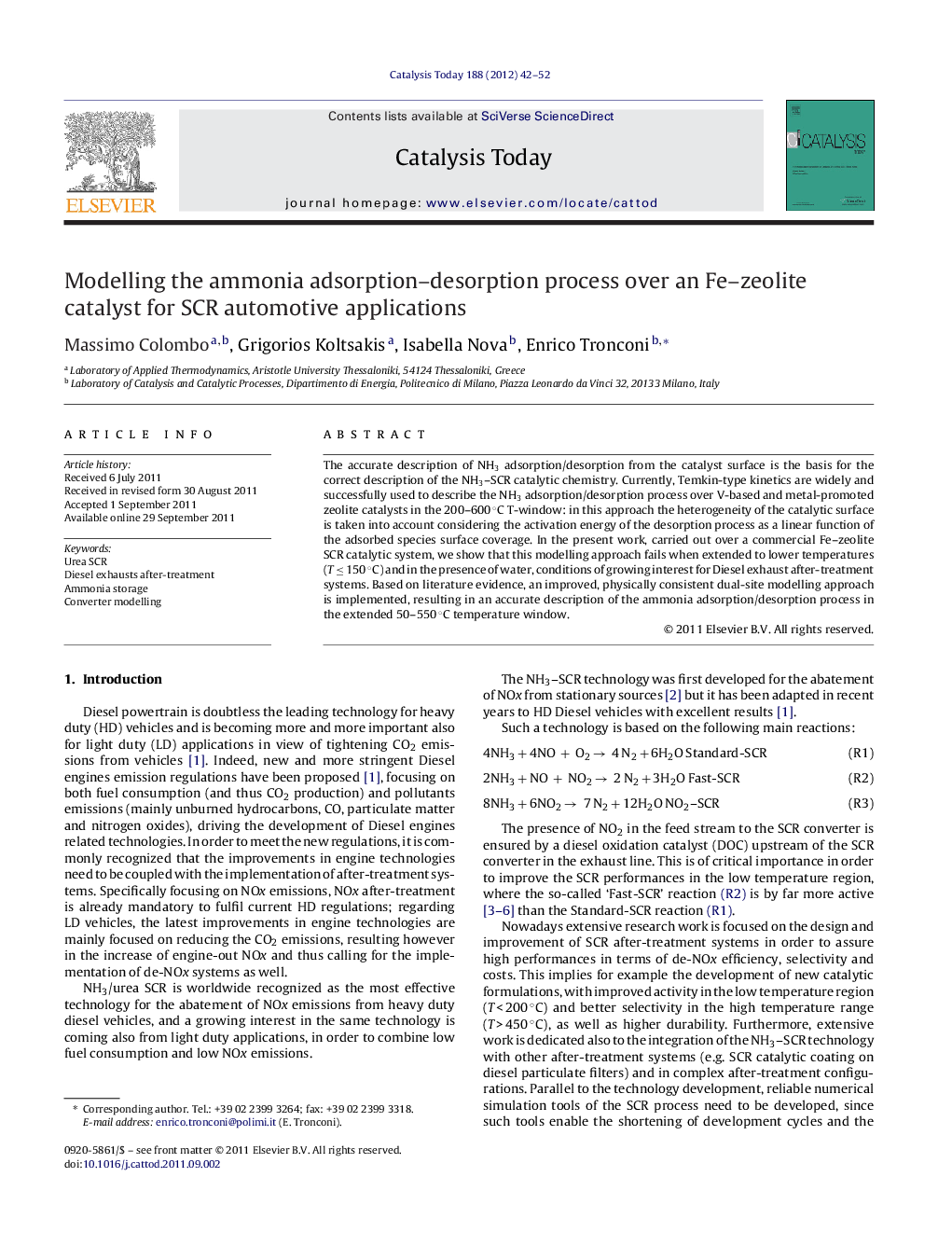| Article ID | Journal | Published Year | Pages | File Type |
|---|---|---|---|---|
| 55463 | Catalysis Today | 2012 | 11 Pages |
The accurate description of NH3 adsorption/desorption from the catalyst surface is the basis for the correct description of the NH3–SCR catalytic chemistry. Currently, Temkin-type kinetics are widely and successfully used to describe the NH3 adsorption/desorption process over V-based and metal-promoted zeolite catalysts in the 200–600 °C T-window: in this approach the heterogeneity of the catalytic surface is taken into account considering the activation energy of the desorption process as a linear function of the adsorbed species surface coverage. In the present work, carried out over a commercial Fe–zeolite SCR catalytic system, we show that this modelling approach fails when extended to lower temperatures (T ≤ 150 °C) and in the presence of water, conditions of growing interest for Diesel exhaust after-treatment systems. Based on literature evidence, an improved, physically consistent dual-site modelling approach is implemented, resulting in an accurate description of the ammonia adsorption/desorption process in the extended 50–550 °C temperature window.
Graphical abstractFigure optionsDownload full-size imageDownload high-quality image (72 K)Download as PowerPoint slideHighlights► Modelling of NH3 adsorption/desorption from Fe–zeolites in the 50–550 °C T-range. ► Inaccurate low-T description with single site model + Temkin-like desorption kinetics. ► Physically consistent dual-site model for NH3 adsorption/desorption developed. ► Temkin-like desorption kinetics for weak adsorption sites. ► Arrhenius desorption kinetics for strong adsorption sites.
